Your revenue targets aren’t changing, but the world around you is. Small tweaks at every stage of the revenue cycle can help you stay on target no matter what is thrown your way.
Starting with inbound leads, Chief Marketing Officer at SalesLoft, Lauren Vaccarello, shares secrets for optimizing your process, nailing handoffs, and increasing efficiency all the way through implementation. You’ll leave armed with ideas to get the most out of your entire revenue motion.
Let’s begin with the understatement of the century — sales is really hard! Everyone is being asked to do more with less, so how do you maximize impact across the board?
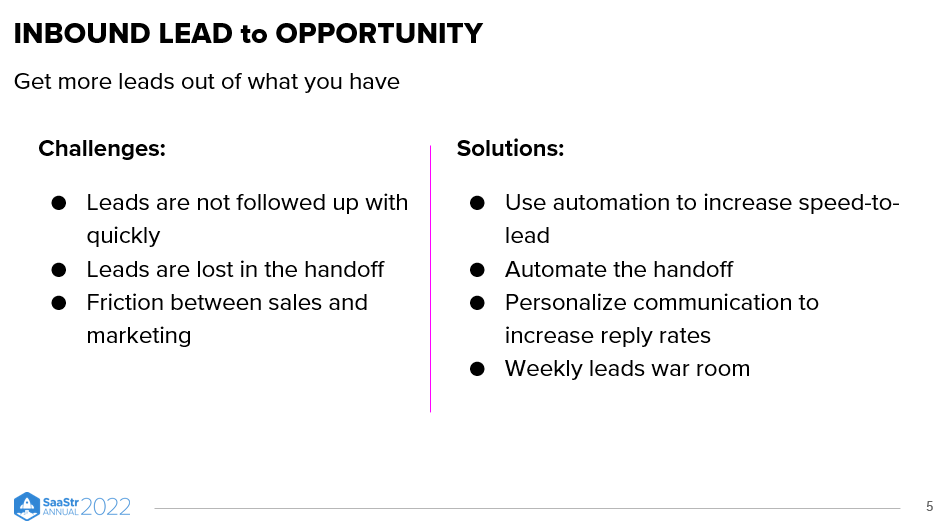
Revenue Motion Isn’t A Series Of Independent Movements
If you’re swinging a golf club, you don’t stop with every move you make to assess if it’s right. At least not if you’re trying to actually hit the ball well. The same is true for sales. People are being done a disservice if they’re talking about revenue motion as individual pieces independent from one another.
Sales reps often talk to customers as if they are in stand-alone stages, independent silos. This creates a disjointed experience for the customer and the sales team, just as it would create a clunky experience for a golfer trying to find fluid motion to hit the ball but was forced to stop and reassess on the backswing.
Viewing sales as individual pieces is great when you’re learning something and terrible when your skin’s in the game.
So think of revenue motion as one continuous motion. Customers don’t care that there are people in different departments. They see you and your team as a single company, so mind the gaps and handoffs between departments throughout the deal.
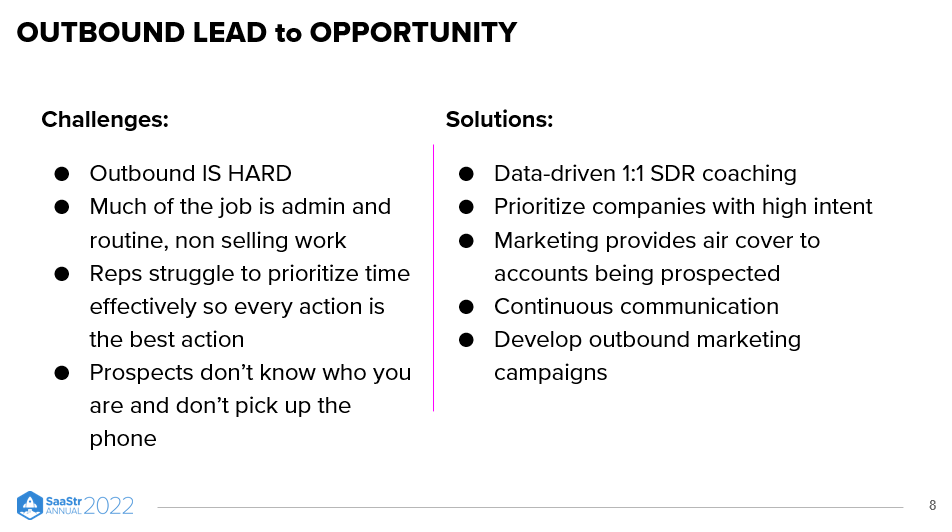
How To Get More Out Of Your Inbound Leads
One of the simplest and often overlooked ways of turning a lead into an opportunity is to follow up quickly. In Vaccarello’s last role, leads took two to five days for a first touch. Do you know what happens when you call a lead five days later? They don’t care.
So if you walk away with one bit of wisdom, it’s that time kills deals. Follow up as fast as you can with leads. Automate it. Create processes around getting that touchpoint as soon as possible.
Personalization is another powerful tool for inbound leads. When Vaccarello was an SDR during the dark ages, her team could touch 50-100 leads at a time. Now, we are no longer in the dark ages, and SDRs can prospect about 300 leads. Thanks to automation, the amount of volume and velocity they can get now is tremendous.
“One of the biggest mistakes people make when using sales engagement and automation is taking a bunch of leads, dropping them into a cadence, not doing a thing, and wondering where all the results are,” says Vaccarello. You have to look at personalization. Not for everything, of course. She continues, “Think about personalizing 20% of your email average for a 2x higher reply rate.”
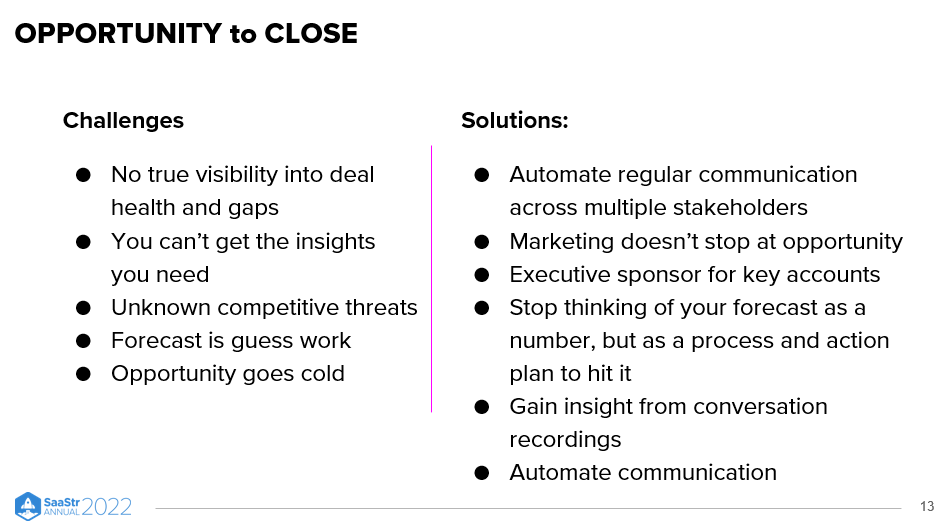
Create A Leads War Room
So you have lead flow coming in and great feedback from your SDRs, but there still isn’t alignment and continuity getting to marketing and the brand team. What do you do?
Create a weekly leads war room like Vaccarello’s team did as SalesLoft. You bring in people from marketing, sales, product marketing, and digital demand generation. And then, every week, you look at what’s happening with lead flow, where the gaps are, where the messaging is getting lost, and you fix it in real-time with the people sitting in that room.
Your weekly leads war room keeps everyone across the entire revenue motion on the same page, so you get everything you can out of the process.
How To Make Outbound Really Work
Outbound is the hardest job anyone can do. So much of it is admin work, digging through leads, figuring out what’s going on, and hoping someone picks up the phone (or doesn’t, if you’re a fan of voicemail). You can make outbound work, but you can’t do it how we did in the dark ages.
How do you achieve this?
- Prioritize coaching.
People are busy. Really busy. You may not feel you have time, budget, resources, etc., to think about coaching, and that’s going to be to the detriment of your entire revenue motion. Coaching is an incredible opportunity to see what people on your team are actually saying, look at call intelligence and call reporting, and find ways to improve.
- Target your outbound efforts to new companies in market for your offering before they even reach out.
Unlike the old days of giving sellers a phone book and telling them to start calling, you can now look at intent data to see who is in market. As we know, the most important thing to closing a deal is timing. If someone is interested, call them as quickly as possible.
But how do you capture intent if they aren’t picking up the phone and calling you? Fortunately, there’s some incredible tech out there, like 6sense or Demandbase, that you can use for buyer intelligence data. Of course, this only works if your reps and marketing teams use the information. Once you’ve captured your lead, it’s time to convert them.
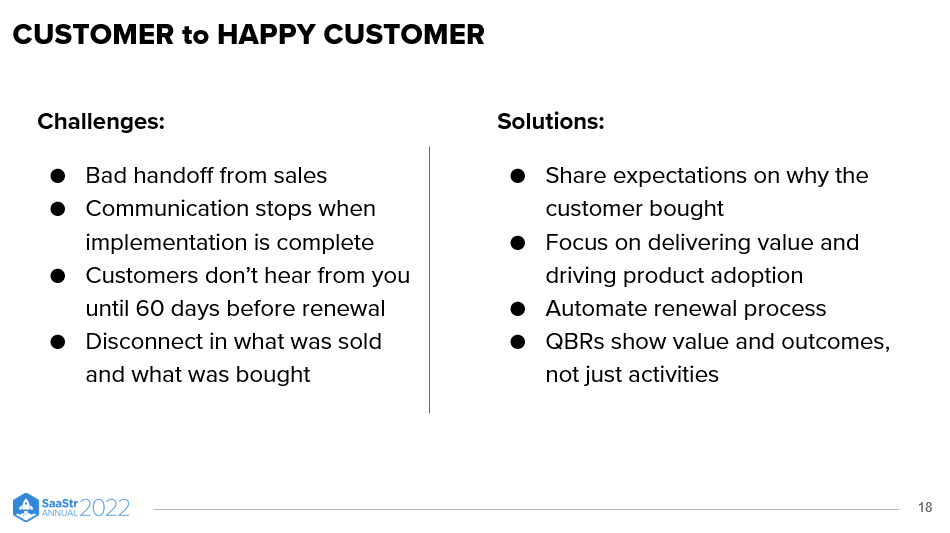
Don’t Fumble The Handoff
So you’re driving 30 opportunities per month per SDR. You’re doing a great job. Leads are qualified. The job’s done. A company doesn’t make money from that, so how do you convert that lead into an opportunity?
Let’s first glimpse at how a customer feels during handoff.
The SDR has qualified them and passed them to AE. The customer might be thinking, “Who is this person I’m talking to? I have to go through the qualification process all over again. It’s like day one.”
The handoffs between teams are a massive drop-off point during the revenue cycle. You don’t want that. It doesn’t lead to more revenue.
To avoid this, mind the gaps between handoffs by logging deal notes in the account. It’s such a simple step that could save a lot of deals. Encourage your team to use deal notes and if you’re using sales engagement software, make sure it auto-syncs with the CRM, so everyone involved with the account knows exactly what’s been discussed.
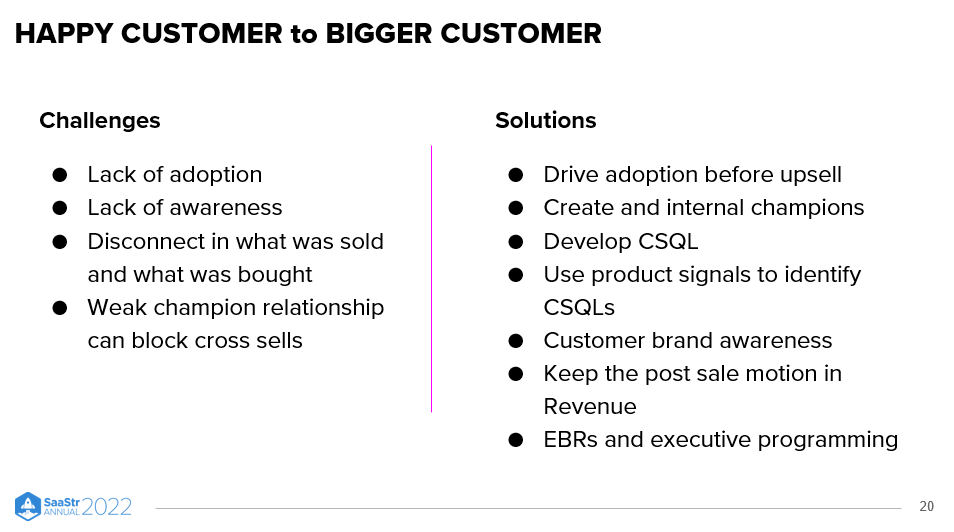
It’s Time To Close The Deal.
This is where the money gets made. How do you get the most out of this stage in the revenue motion lifecycle?
First, let’s look at the biggest challenges for closing a deal.
- You have no real visibility into deal health and gaps — If you don’t know there’s a problem, you can’t fix it.
- Your team isn’t getting insights and has unknown competitive threats — You don’t want surprises. Surprises are for birthdays.
- Forecasting is guesswork — A Mckinsey study said, “Applying AI to your forecasting can reduce errors by 20-50%.”
To get the most out of closing, start with coaching. Vaccarello shares that “reps who get just three hours of coaching per month increase their close rates by 70%.”
AI and automation are going to help you with coaching. It’s not all on your shoulders. Use call recording to learn if filler words exist and what pitch works best. Use other products to see what activities reps prioritize to ensure they’re using their time the right way. So much cool tech exists to support sales teams.
And it’s worth noting that a marketer’s job doesn’t exist up until the sales point and just stops. They generated the lead. The lead went to the SDR. The SDR converted that lead to an opportunity. Marketers need to support the deal throughout the entire deal flow, creating a touch plan to ensure they can provide at bat and move deals through the entirety of the deal cycle.
Just as marketers need to be involved throughout the process, so does the post-sales team. They need to be included in the marketing campaigns and have a clear handoff and understanding of why the customer bought the product so they can keep the messaging, the value that sold the person in the first place, at the forefront.
Remember, the entire revenue motion is a continuous movement. Everything should flow seamlessly, just as a golf swing is logical and smooth. The key takeaways for getting the most out of your company’s revenue motion are:
- Get the most out of the leads you have.
- Initiate a fast response at every single stage.
- Really nail the handoff by involving everyone from marketing to post-sales.
- Deliver value every step of the way.
Resources linked in the final slide:

